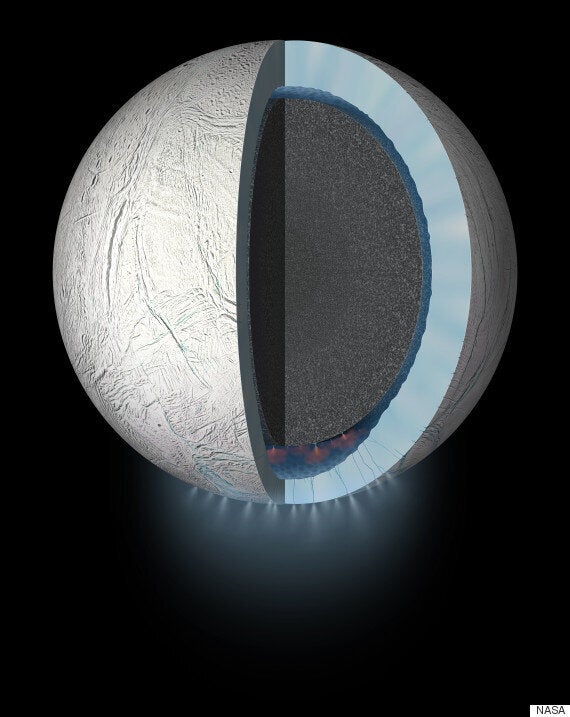Today, at around 3.22pm UK time one of NASA's spacecrafts, Cassini, will fly through the plumes of icy spray that jet out of Enceladus --Saturn's moon.
The probe will tell scientists more about the moon's ocean and underlying hydrothermal activity, which the space agency says "could have the ingredients needed to support simple life."
Before we get excited about the prospect of "alien life" on Enceladus, here are a few important key facts to bear in mind (as provided by NASA)

What is Cassini?
Cassini is an unmanned spacecraft that launched in 1997 and entered Saturn's orbit in 2004.
What's special about Enceladus?
Enceladus is Saturn's icy moon and scientists are curious about its "remarkable geological activity." Plumes of ice particles, water vapour and organic molecules spray out from the moon's south polar region. It has a global ocean and in the past, the Cassini team have speculated about its hydrothermal activity and the potential for it to support very simple forms of life.
So how likely are we to find "alien life"?
Well, NASA are reserved about this particular aspect of the mission. The space agency have stated, that "the flyby is not intended to detect life." However, what the team are hoping to discover is how habitable the moon's ocean environment really is.
Why is this flyby any different to previous ones?
This is the deepest dive yet for Cassini. Previously, it has flown close to the surface of Enceladus but never this low.
What science is at play here?
By flying so deep into the icy plumes, researchers are hoping to pick up on heavier molecules, including organic ones. Organic molecules are the basic building blocks of life and contain carbon atoms as well as hydrogen, oxygen and nitrogen.
What else will researchers hope to learn?
The flyby will also tell scientists how material travels to the moon's surface.